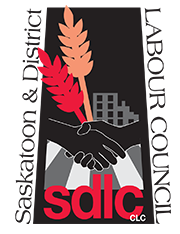Buffalo Narrows jail closure leaves community worse off
Ashley Daigneault and her colleagues gathered for a meeting in the kitchen at the Buffalo Narrows Community Correctional Centre with no warning that they were about to lose their jobs.
It was 2 p.m. on June 1st – the same time and date that Finance Minister Kevin Doherty was scheduled to table the provincial budget in the Legislative Assembly in Regina. In his address, Doherty announced that the Buffalo Narrows Community Correctional Centre would be closing. Fifteen people, including Daigneault, would be out of work as of July 31.
“I think everyone was pretty much in shock,” recalls Daigneault. “Everyone kept asking, ‘What are we supposed to do?’”
Just four months earlier, Daigneault had left a full-time permanent job with the Ministry of Social Services in Saskatoon to take a position as a Corrections Worker in Buffalo Narrows. A single mother of three kids, Daigneault wanted to be closer to her family in Île-à-la-Crosse. Since the announcement, Daigneault has begun looking for work in her home community, but she’s worried that she’ll have to move again.
“There are very few jobs in northern Saskatchewan,” she says. “Before I moved home, I made sure I had a job that I could survive on – and this was it.”
According to the 2011 National Household Survey, the unemployment rate in Buffalo Narrows is 9.4 percent, well above the provincial average of 5.9 percent. The Correctional Centre provides Daigneault and others living in northern Saskatchewan with job security, a living wage, and benefits. It allows Indigenous people from the north an opportunity to live and work in their home communities, to be close to family and friends, and to be immersed in traditional Indigenous culture. Daigneault describes northern Saskatchewan as a close-knit community where people look after one another.
“To just uproot and leave all of this, and struggle back in the city gives me anxiety,” says Daigneault. “[Living there], all of my money went to bills. If it weren’t for my parents, my kids and I would literally starve. How am I going to do that again?”
Willy Desjarlais is also worried about his future. He has been a Corrections Worker at the Buffalo Narrows centre for eight years. In November, after his position became full-time, he bought a house and took on a mortgage.
“There was no sign that they were going to close us down,” he says. “Things were looking up, I was feeling pretty comfortable, and then bang – it was the worst news ever. This is my career, and then all of a sudden, somebody comes and says, ‘OK, you no longer have a job, see you later, thanks for your service.’”
Desjarlais lives in Buffalo Narrows with his girlfriend and their three children.
“I’m depressed,” he says. “I can’t sleep, and it’s affecting my family.”
He says his kids are starting to ask questions: “Dad, are we going to have money to buy this? Do we have to sell our house? Are you fired, Dad? How come you’re sad?”
“Little kids can see parents’ emotions,” says Desjarlais. “I just tell them, ‘Everything will work out. You don’t have to worry about it. Dad will find another job.’”
But when and where – and what that will mean for Desjarlais and his family – remains to be seen.
Daigneault says she is also worried about the inmates, who will be taken far from their home communities, making it difficult for family to visit.
“The majority of them will probably go into culture shock,” she says, adding that they won’t get the kind of support they get now.
The Buffalo Narrows Community Correctional Centre is a low security facility. Inmates receive education and training by doing odd jobs – such as chopping and hauling wood, shoveling snow, and mowing the grass – for local businesses, organizations, and elders. As a result, some inmates leave the correctional centre with jobs. They also maintain good relationships with the corrections workers.
“We get along,” says Desjarlais. “We interact with the inmates, we counsel them, we try to show them positive things in life. If they come back, we know who they are and how they are, and we know how to approach them.”
Daigneault, who has assisted inmates with writing letters and filling out application forms, agrees.
“The inmates here ask us for help,” she says. “To me, that’s a good rapport and a good system, because it helps with rehabilitation and recidivism rates.”
The close proximity to family that the Buffalo Narrows centre provides is an important part of inmate rehabilitation. Studies consistently show that inmates who maintain close relationships with their family members are less likely to re-offend, and more likely to lead stable and productive lives once they re-enter the community.
With the closure, these opportunities and relationships will be lost. The 14 inmates currently housed at the Buffalo Narrows Correctional Centre will be re-located to one of three centres in the province – Besnard Lake Correctional Camp in La Ronge (335 kilometres away), the Prince Albert Correctional Centre (400 kilometres away), or the Battlefords Community Corrections Centre (400 kilometres away).
Greg Fleet, Executive Director of the John Howard Society of Saskatchewan, says he’s disappointed that inmates in northern Saskatchewan will be moved out of their home communities.
“When you move people away from the community where they are from, it makes it much more difficult for family members to connect with the person who is incarcerated,” says Fleet. “Our position on incarceration is that people are sent to jail as punishment, not for punishment. When a person is incarcerated, the day that they go in, they should be working on a plan for release so that when the person does leave custody they’re prepared to re-enter society.”
Since the announcement, Daigneault has received handwritten letters from inmates. One 24-year-old inmate wrote that he’s been in and out of jail his whole life but plans to become a productive member of society thanks to corrections staff who helped him get into Northlands College.
Another wrote about the importance of being close to his family so they can visit him, and how grateful he is for the opportunity to work in the community so that he can send money to his family.
The closure is estimated to save the provincial government $661,000 this year and $1 million per year after that. Daigneault wonders how 15 jobs in northern Saskatchewan, and the rehabilitation of up to 18 inmates, can be less of a priority than the Mosaic Stadium, which will receive $25 million from the provincial government this year.
“We have little in the north as it is,” she says. “Why target us?”
To express your concerns about the closure of the Buffalo Narrows Community Correctional Centre, please contact:
Hon. Christine Tell
Minister Responsible for Corrections and Policing
Room 345, Legislative Building
2405 Legislative Drive
Regina, SK S4S 0B3
Tel: 306.787.4983
Email: minister.cp@gov.sk.ca





